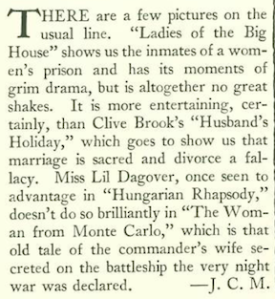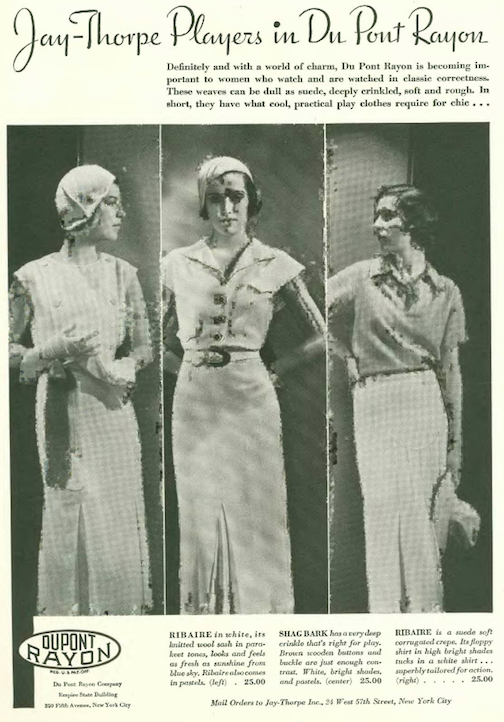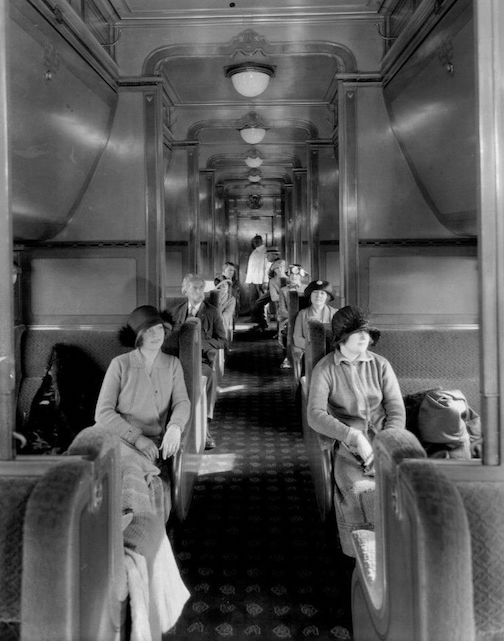Whether or not you could afford a new car in Depression-era New York, you could afford to take your mind off the hard times for a few hours and visit the annual National Automobile Show at Grand Central Palace.

The 1932 exhibition featured many familiar brands, and others that would not survive the decade. Bolstered in part by the largess of General Motors and its downscale LaSalles, Cadillac could offer a pricey edition of the Fleetwood (at $5,542, roughly equivalent to $100K today), but most car makers featured models with reduced prices and/or smaller engines, as well as new technologies and design features they hoped would attract buyers of modest means. Excerpts from The New Yorker’s “Motors” column:




Whether folks were able to shell out more than $5,000 for a Caddy or a mere $700 for Plymouth, many left the show with nothing more than dreams for better days. Howard Brubaker summed it up thusly in his “Of All Things” column:
* * *
Darling Lily
Coloratura soprano Lily Pons (1898–1976) was not well-known in her native France when she took the Metropolitan Opera stage by storm in 1931—she would become the Met’s principal soprano and, in 1940, an American citizen. The singer was profiled by Janet Flanner in the Jan. 16 issue (caricature by Miguel Covarrubias). Excerpts:

If you have a few minutes, check out Lily Pon’s 1935 performance of “The Bell Song” from the film I Dream Too Much, which co-starred Henry Fonda. Although the sound quality is not the greatest, you can still get a pretty good idea why Met audiences adored her.
* * *
Fantasy Bridge
Satirist Ring Lardner found something rotten in the behavior of robber barons and politicians in the midst of the Depression, so he imagined a bridge game that brought together banker J.P. Morgan (Jr), John D. Rockefeller (then the richest person in America and perhaps the world), Sen. Reed Smoot of the Smoot-Hawley Tariff Act (a catalyst for the Depression), and social worker Jane Addams. Excerpts:

* * *
From Our Advertisers
If you were one of J.P. Morgan’s bankers, you might have considered hopping on a United flight instead of taking the train—within 20 years, airlines would make a serious dent into railroad’s corporate travel business…

…and if you were a successful banker, your daughter or granddaughter might have been an aspiring deb with some very specific needs…
…the Little King also had some specific fashion needs, as Otto Soglow brings us to the cartoon section…
…with the Auto Show in town, Helen Hokinson got her girls into the conversation…
…the “wizard control” they refer to was Buick’s gimmick to attract more women drivers to their product…here’s an ad from the Feb. 6 issue of the New Yorker:
…back to our cartoons with James Thurber, and the “war” that continued to brew between men and women (note artwork on the wall)…
…Al Freuh offered his perspective on meagre predictions for prosperity…
…as did one of William Steig’s precocious children…
…and Helen again with another privileged view of the downtrodden…
…Barbara Shermund showed us one woman’s interpretation of “belonging”…
…and Denys Wortman gave us one salesman who probably dreamed of some solitary drinking…
…on to our Jan. 23, 1932 issue…

…and this item in “The Talk of the Town,” which noted the challenges of publishing a book about Adolf Hitler…
…and a few pages later, we are treated to an E.B. White “song” written for delegates to the Conference for the Reduction and Limitation of Armaments which was being convened in Geneva, Switzerland…
Delegates from sixty countries attended the Geneva conference. They were there to consider the German demand that other nations disarm to the same levels that had been imposed on them by the Treaty of Versailles. The conference deadlocked by the summer, and when it was reconvened in February 1933 Hitler had just assumed power in Germany. By fall 1933 Germany withdrew from both the Disarmament Conference and the League of Nations, and the stage was set for another world war.
Here is a 1933 photo of the delegates to the Disarmament Conference before things went south:

A detail of the photo (below) reveals the identity of the tiny man seated at center: the representative from Germany—Minister of Public Enlightenment and Propaganda Joseph Goebbels. Just twelve years hence Goebbels would find himself trapped with Hitler and Eva Braun in a Berlin bunker as Soviet troops demolished the city above them. Goebbels and his wife, Magda, would poison their six children, and then themselves as the Third Reich crumbled to ashes.
A final note: The delegates weren’t alone in Geneva, as a number of peace organizations sent observers and demonstrators to the conference, many of them women:

We’ll give the last word to Howard Brubaker in Jan. 30 “Of All Things” column:
* * *
From Our Advertisers
With the National Automobile Show wrapping up, the Grand Central Palace prepared to welcome exhibitors for the annual Motor Boat Show…
…the woman in this next ad might have been better off in a boat than on the beach…I’m wondering if the artist had any idea that his or her illustration would be used to promote coffee…it’s hard to tell what is going on here…apparently a young woman has almost drowned and is receiving oxygen, or maybe she doesn’t really need it, and the perverted lifeguard and cop just want to ogle the poor beachgoer, who seems bored by the whole predicament…
…there is also something vaguely sexual going on in this ad for Vicks (what is he looking out for in panel four?)…the artist (the cartoon is signed “Len”) seems to be channeling one of Rea Irvin’s series cartoons…
…in the early 20th century it was fashionable to smoke imported luxury Egyptian cigarettes, or counterfeits like Ramses II, produced in the U.S. by the Stephano Brothers…
…the makers of Camel were among the most successful counterfeiters of Egyptian cigarettes — the camel, pyramids and palm tree motifs were no mistake, but by 1932 this established brand (launched in 1913) went less for snob appeal and more for the active, fresh-faced youths whose pink lungs were highly coveted by R.J. Reynolds…
…on to our cartoons, we begin with James Thurber and some more sexual tension…
…Garrett Price found a young hostess eager to to please…
…Perry Barlow introduced us to a young man who (almost) never forgets a face…
…William Crawford Galbraith dined with the uppers, not necessarily known for their literary sophistication…
…Barbara Shermund gave us a proud collector who managed to evade the Puritans in U.S. Customs…

…William Steig showed us pride of a different sort…
…and another by Steig displayed the antics of one of his “Small Fry”…
…and we end with Helen Hokinson, who found a local women’s club joining the debate raging far away at the Disarmament Conference in Geneva…
Next Time: Back in the USSR…

































































































